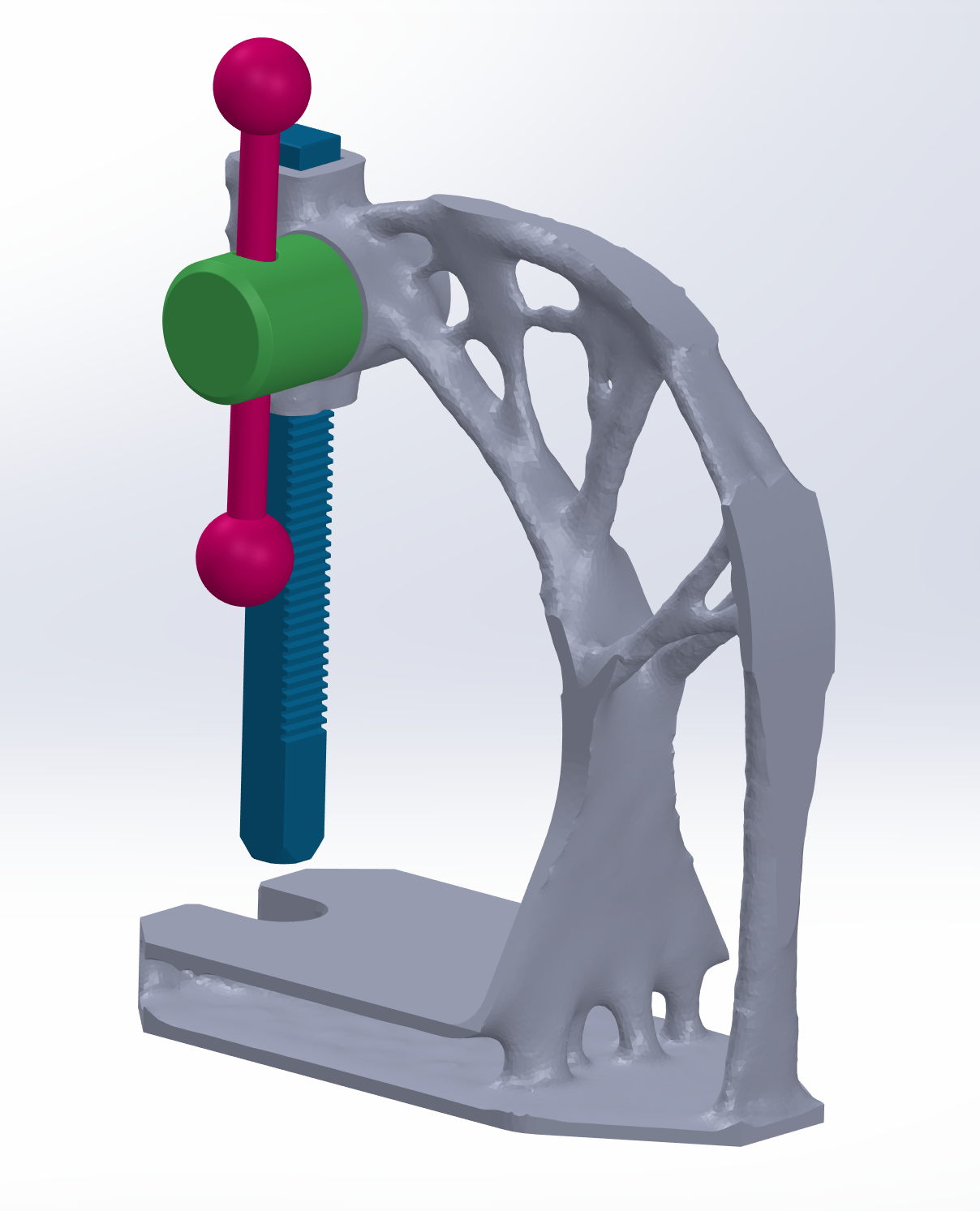If one thing I had clear about the Main Project is that I was going to design a manual press of some kind. First I was attracted by old machinery design (industrial revolution aesthetic) but after a while I switched my interest towards the organic/generative design that has lately been possibly done thanks to computation. In fact, what I loved about the Industrial Revolution machinery aesthetic is its organic shapes. I have been always attracted for art-noveau nature shapes and also by nature itself. If we look the human bones for example, they have the optimum shape to whistand the different mechanical strains using as less material as they can. I don’t know how the manual press was going to looc or exactly function but my intend was to use generative software for designing the body for sure.


Before designing I stablished some specs and constrains that the final product had to satisfy:
Top 5 Specifications:
1- The mechanism of the press will consist of one lever connected to a gear which will drive a geared rod.
2- The body will be designed to withstand a force of 1500N using cast iron.
3- The pressing rod will have a minimum travel of 150 mm.
4- The base of the press have to permit the pressed part to have as much room as possible to move and be oriented in different ways.
5 – The mechanism of the press have to be able to be disasembled for maintenance or change broken parts.
Top 5 Constraints:
1- As I am not available to make it of cast Iron I will 3D print it, and maybe I will consider printing it at little scale to save printing time.
2- Although generative design has a lot of possibilites, I have to keep in mind that it has to be casted in a sand mould, so not every geometry might be castable.
3- 3D printers availability, I hope some 3D printing machine is available to print my parts and I can finish the project on time.
4- 3D printers are not magical: I might be able to cast some geometry but not be able to 3D print it, so I will have to keep this in mind.
5- As the gear and the rod will also be made of 3D printing, I will have to be careful what technique I use to be able to have good teeth in both.
When doing this post, I don’t have the final product with me but I know it has been already printed and I have to pick it up, so expect some images of the actual model on the next post.



2 Comments. Leave new
I think this looks really great. It must take a lot of creativity and ambition to get something like this made. I’m a little concerned about how the 3D printing process will go considering these intricate parts and overhanging masses. I haven’t done a ton of 3D printing myself, so I may be speaking out of turn, but I hope yours is a success. Great work!
The combination of organic, natural form and precise empirical function in your project is really compelling. The intricate design and modeling work in that last photo is also quite impressive. I really hope the manufacturing of it comes together for you, it’s such a cool project. Thanks for sharing it with us.